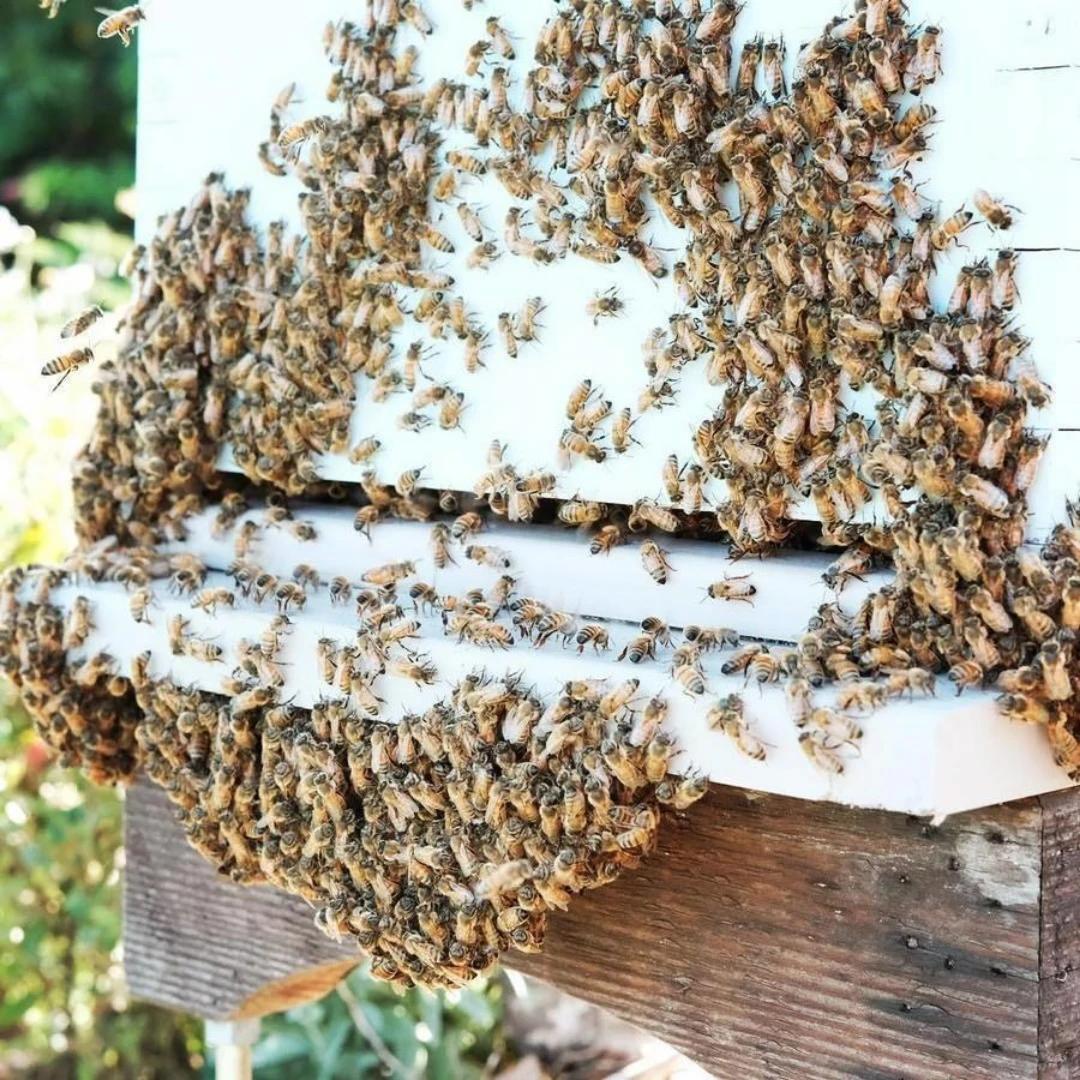
3 minute read
6C
Is it getting too hot for our bees? (Jana 6C)
If you enjoyed reading Abrar’s research about how bees can survive the heat of Qatar then you will really enjoy this article where Jana goes deeper into how we can observe whether our bees are getting too warm and how they use water molecules to create their own air
Advertisement
conditioning.
Like Abrar, I am researching about how bees are able to survive in the heat of Qatar during the summer. I chose to research this topic because bees mostly have a thick guard layer of skin and in Qatar, it could get up to around 47 degrees, so I wondered how the bees are able to survive. At first, I thought that bees would not live long but you will find out later about some interesting information!
There are several ways that bees can regulate their temperatures and not die from extreme heat. Many people think that bees can easily die because they have a thick layer of skin which ends up causing them to faint.
However, just like humans, bees adapt to the condition, and as a result, they will not die from overheating.
How they protect themselves in the extreme heat is by placing a few droplets of water onto their outer surface of the honeycomb in the empty cells and then they flap their wings at a very fast rate which causes the water droplets to evaporate. When the water droplets evaporate, the molecules that are in the water droplets enter the air
surrounding the honeycomb which brings down the temperature and cools the hive down. Let’s go into more detail about the ways that bees can keep themselves cool.
Water
Water has a big effect on bees as they use water to decrease the temperature of their hive. A few different types of bees such as ‘worker bees’ go out and search for some water to splash at the heated parts of their hive and they would do this over a thousand times until their hive receives a decent temperature that suits the bees. The water would cool down the surface of the honeycomb and hence make it more comfortable to be in during extreme heat.
Using their wings
Bees have a similar method to humans as to how they cool the hive down, instead of going out to search for some
small droplets of water. The worker bees fly to the entrance of the hive and use their wings as a source of energy to cool down the hive. If their flapping range is too weak to cool down the hive, other bees join in to increase the power of their energy and they continue doing this until their hive is at a suitable temperature for them. They work so hard that they just get weaker and eventually die. This technique that bees use is similar to how a hand fan which humans use works.
How would you discover if the hive is getting too hot for the bees?
For queen bees, you will realize that they will stop laying eggs as the heat could be very hot for eggs to be laid down so that they can go and collect water for a few bees such as the ‘immature bees’. Sometimes, you could notice that the bees will be outside of their hive surrounding it and the most effective reason as to why that would be happening is because of the heat that could be getting to the hive. This kind of movement for bees is called ‘bearding’. Bearding means when the bees would make a ‘beard’ shape surrounding the hive because of the possible heat in their hive. They would do this so that they would not block the entrance of the hive so that the fresh, chill air can enter and decrease the temperature of the hive.

Jana’s research has some
practical implications for our biodiversity garden. We need to ensure that we provide enough access to water for our pollinators and in our following issues, you will be able to read about how we are using recycled plastic to create safe watering areas where our insects can drink without drowning.
References I interviewed Papy Michel
https://schoolofees.com/can-bees-die-from-heat/
https://www.honeyflow.com/blogs/beekeeping-basics/ bearding-what-does-itmean#:~:text=Bearding%20is%20a%20term%20referring,a %20hot%20and%20humid%20day.







